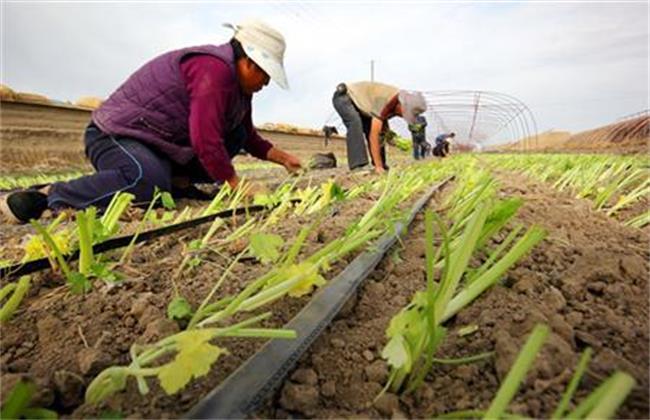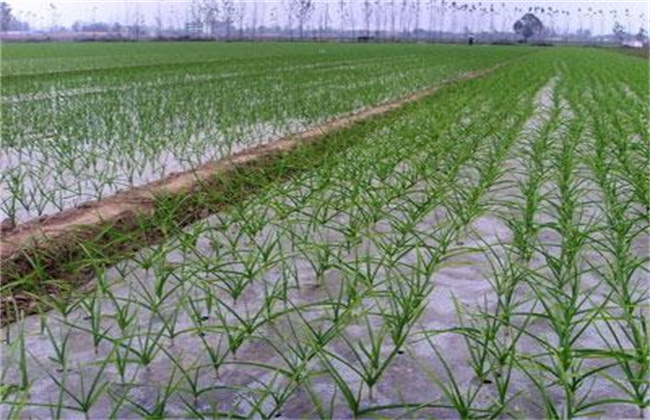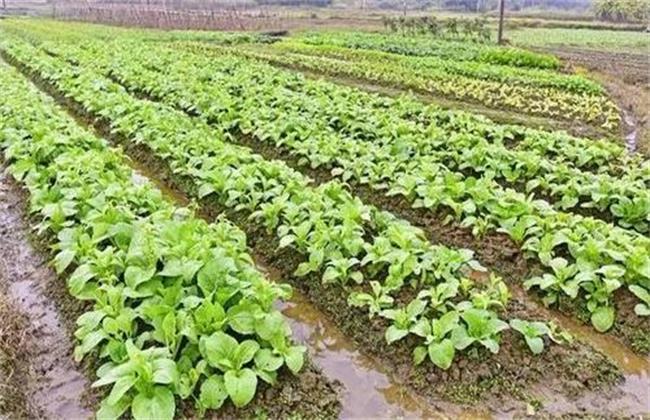Key points of vegetable planting management in early spring
Now it is the time of planting vegetables in early spring, if the planting time or planting water is not correct, then the survival rate of seedlings will be greatly reduced. So when vegetables are planted in early spring, how should they be managed to make the crops grow better? Let's get to know it with the editor.

1. Planting time
In order to cultivate strong heels, it is recommended that the planting time be limited to clear weather, and it is best to maintain 2-3 consecutive good weather. When the seedlings are planted in sunny days, the seedlings will have a slight withering phenomenon, but this wilting is the self-regulation of the seedlings and the changes made by the seedlings in order to adapt to the environment, which will not only reduce the evaporation of water in the body. and it will also promote its renewal faster and deeper growth. At the same time, seedling planting is more conducive to slow seedling, 2-3 days later, with the growth of new roots, the plant will enter the normal growth state, there will not be acute wilting phenomenon.
2. Planting mode
Crops planted in early spring, no matter what is wrong, must be planted by ridging, because at this time the ground temperature is still low, ridging cultivation is conducive to slow seedlings, but also can raise the ground temperature. Plant row spacing is also critical when planting, we must pay attention not to flat planting, fixed plant row spacing should not be too dense or too thin, otherwise it will have a great impact on the yield in the later stage. Generally, it should be planted shallowly when planting, because of the low temperature in early spring, it is not easy to root if the planting is too deep.
3. Temperature and humidity management
In planting slow seedlings, it is necessary to appropriately widen the temperature difference between day and night to squat seedlings, which can promote the seedlings to become stronger. In general, legume vegetables are controlled at 26-28 degrees during the day and 12-14 degrees at night, eggplant fruit vegetables are controlled at 25-28 degrees during the day and 12-14 degrees at night, and melons and fruits vegetables are controlled at 26-30 degrees during the day and 14-15 degrees at night. In addition, the humidity in the greenhouse should be controlled at 70% Mur80% as far as possible. When the humidity is too high or the ground temperature is high, it needs proper ventilation, which can also prevent it from happening. If necessary, you need to use a dehumidifier to dehumidify the room. When the humidity is too low, you can use water spray to increase the humidity.
4. Fertilizer and water management
After planting, reasonable watering is needed to keep the soil moist, so as to prevent the plant from wilting. Generally speaking, slow seedling water should be carried out on a sunny day about a week after planting, preferably under the plastic film, and pay attention to raising the low temperature after watering. At the same time, release air and drain moisture in time. When watering, choose clean water quality to prevent algae from growing and blocking drip irrigation pipes. At the same time, it is necessary to combine watering and topdressing in time. In the case of sufficient base fertilizer, there is not much fertilizer for planting, mainly to promote root growth and make good use of functional fertilizer.
The above is an introduction to the key points of vegetable planting management in early spring. I hope it can help you. If you want to know more about it, please follow us.
Related
- Where is it suitable to grow horseradish in China? it is expected to see the middle altitude horseradish in Alishan.
- How to prevent tomato virus disease reasonably? (Control methods included)
- Many people like to plant towel gourd on the balcony. What are the main points of this method and management?
- What crops can chili peppers be mixed with?
- Fertilization techniques and matters needing attention in Tomato
- What are the grafting techniques for peach seedlings in spring?
- Harm and control methods of root swelling disease of Chinese cabbage
- What are the pests of sweet potatoes? How to prevent and cure it?
- Symptoms, causes and Control methods of navel Rot in Tomato
- The cause of "Cucumber rotten bibcock" in Farmers' planting Cucumber and its Control Plan



